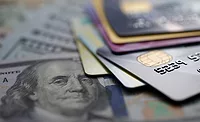Call Center Fraud Increased 113% in 2016
Call center fraud is rising at an astronomical rate, increasing 113% in 2016, according to the 2017 Call Center Fraud Report by Pindrop Labs.
Pindrop found fraud rates increased 113% over the previous year. That has resulted in a fraud rate of 1 in 937 calls in 2016, compared to 1 in 2,000 calls in the previous year. And this problem has morphed from being a responsibility of the call center operations to one of IT security.
"When we first started the company [Pindrop]..., it was a call center operations headache. As the attacks have increased, losses continue to increase, and the phone is being used as part of a multichannel attack, the CISO is becoming more and more involved," says David Dewey, director of Pindrop Labs.
Call center fraud is rising at an astronomical rate, increasing 113% in 2016, according to the 2017 Call Center Fraud Report by Pindrop Labs.
Pindrop found fraud rates soared 113% over the previous year. That has resulted in a fraud rate of 1 in 937 calls in 2016, compared to 1 in 2,000 calls in the previous year. And this problem has morphed from being a responsibility of the call center operations to one of IT security.
"When we first started the company [Pindrop]..., it was a call center operations headache. As the attacks have increased, losses continue to increase, and the phone is being used as part of a multichannel attack, the CISO is becoming more and more involved," says David Dewey, director of Pindrop Labs.
The report highlights three key weaknesses in many call centers today:
Technical: Fraudsters have the ability to spoof caller ID and use applications such as Skype or Google Voice to hide their identity and location. This data is now no better or more reliable than email addresses. Fraudsters also abuse IVR (interactive voice recognition) systems to try to reset victims' PINs, test account numbers, or find more information on a target.
Human: The true target of call center fraud attacks is the employee on the other end of the line. With hundreds or thousands of legitimate calls for every "bad" call, customer service representatives focus on resolving customer issues efficiently. The risk of falling prey to a fraudster is high, and so is the potential downside if an agent mistakes a legitimate customer for a fraudster.
Organizational: Call centers are designed to handle huge volumes of activity and agents are measured on how quickly they get each call resolved. Fraudsters use the data they've gathered on a target account to pass knowledge-based authentication tests and social engineer the agent into giving them access to the account knowing an agent's primary goal is to speed them to a resolution.
Looking for a reprint of this article?
From high-res PDFs to custom plaques, order your copy today!




